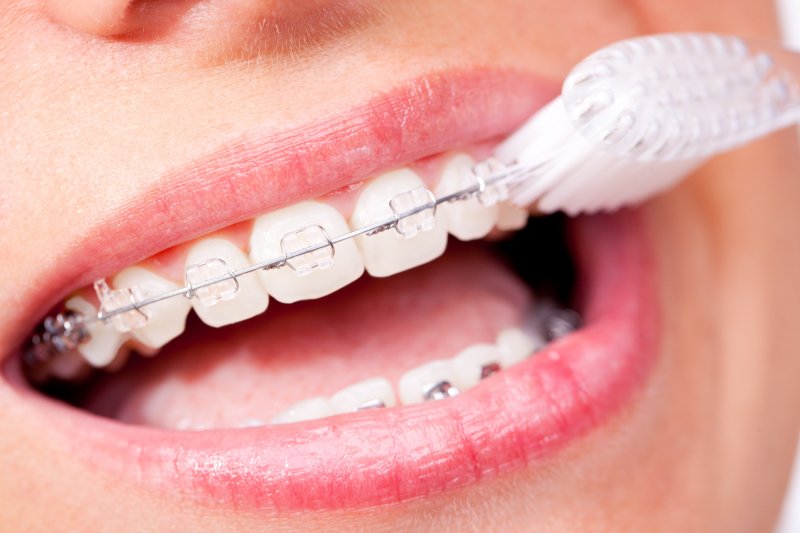
When starting orthodontic treatment, you probably have many questions about the process, timeline, and maintenance of your new appliances. Learning the proper technique for brushing and flossing with braces can require additional dental tools and much patience. While your oral hygiene routine before orthodontics may have been swift, you can expect to devote more time to caring for your teeth and metal appliances if you want to avoid common oral health problems throughout treatment. An orthodontist explains the appropriate methods to use to ensure your smile looks and feels its best when the braces come off.
How to Effectively Brush Your Teeth with Braces
Brushing is a key component of any good oral hygiene routine. Whether you have braces or not, you will certainly improve the health of your smile by regularly cleaning your teeth (twice daily for two minutes) with the right toothbrush and technique. While wearing metal brackets and wires, you may find that an electric toothbrush is much easier to use when trying to maneuver around your appliances. A few things you can do to ensure a proper cleaning include:
- Removing your elastics, rubber bands, or anything not affixed to your braces
- Rinse your mouth before starting to flush out any loose food particles
- If necessary, use an interdental brush to clean around each bracket and underneath wires
- Carefully brush both wires by moving your brush from top to bottom and around your upper and lower teeth
- Sectioning your mouth into quadrants and brushing your teeth, gums, and oral surfaces for two minutes
- Rinse well and check for remnants to ensure there is nothing left behind
How to Effectively Floss Your Teeth with Braces
If brushing doesn’t sound too difficult, flossing may cause you to stop and listen. Trying to maneuver dental floss underneath wires and around brackets takes time, which you will need to make sure you have plenty of in the beginning. As you incorporate flossing into your daily routine, it will become easier over time. To do this properly, make sure you:
- Floss at least once a day using waxed dental floss, as this will glide between your teeth much easier than unwaxed floss.
- Use at least 18 inches of floss to make sure you have enough to clean all your teeth.
- Pass the thread underneath your wire and gently move it back and forth between your teeth until you reach the gum line. Then, move it up and down to clean both sides of the tooth before removing the floss and re-threading it under the wire again to repeat the process on the next teeth.
- Do not push or pull the floss. Instead, gently move it back and forth, up and down.
You may find that a floss threader or water irrigator is easier to use than traditional dental floss. The product you choose is your decision.
By maintaining an optimal oral hygiene routine and continuing to see your dentist and orthodontist throughout treatment, you will see a healthy, beautiful smile you can thoroughly enjoy in the end.
About the Author
Dr. Justyna Balicka is a trusted orthodontist in Huntington. Helping patients with crowded, crooked, or gapped teeth, as well as those with misaligned bites, she offers a wide array of orthodontic services designed to bring smiles into proper alignment. Whether it is traditional braces, Invisalign, or one of the other available options, she and her team at Huntington Orthodontics will work to ensure the health and longevity of an individual’s smile. Offering valuable tips to maintain teeth and braces, she can recommend helpful tools and techniques to ensure a healthier, more beautiful smile once treatment is complete. If you wear braces and need help to effectively clean your teeth, contact us at (631) 423-7857.

